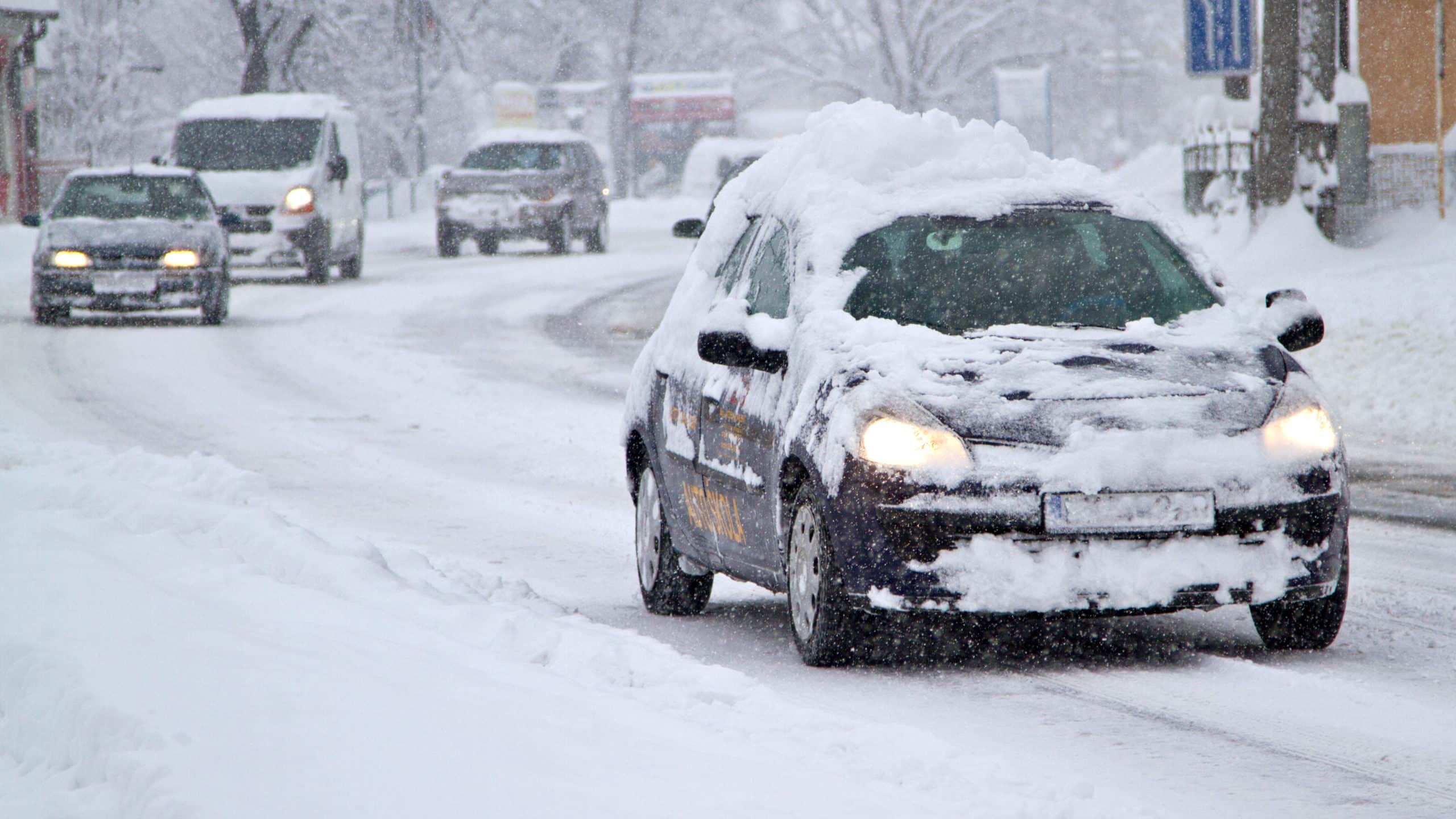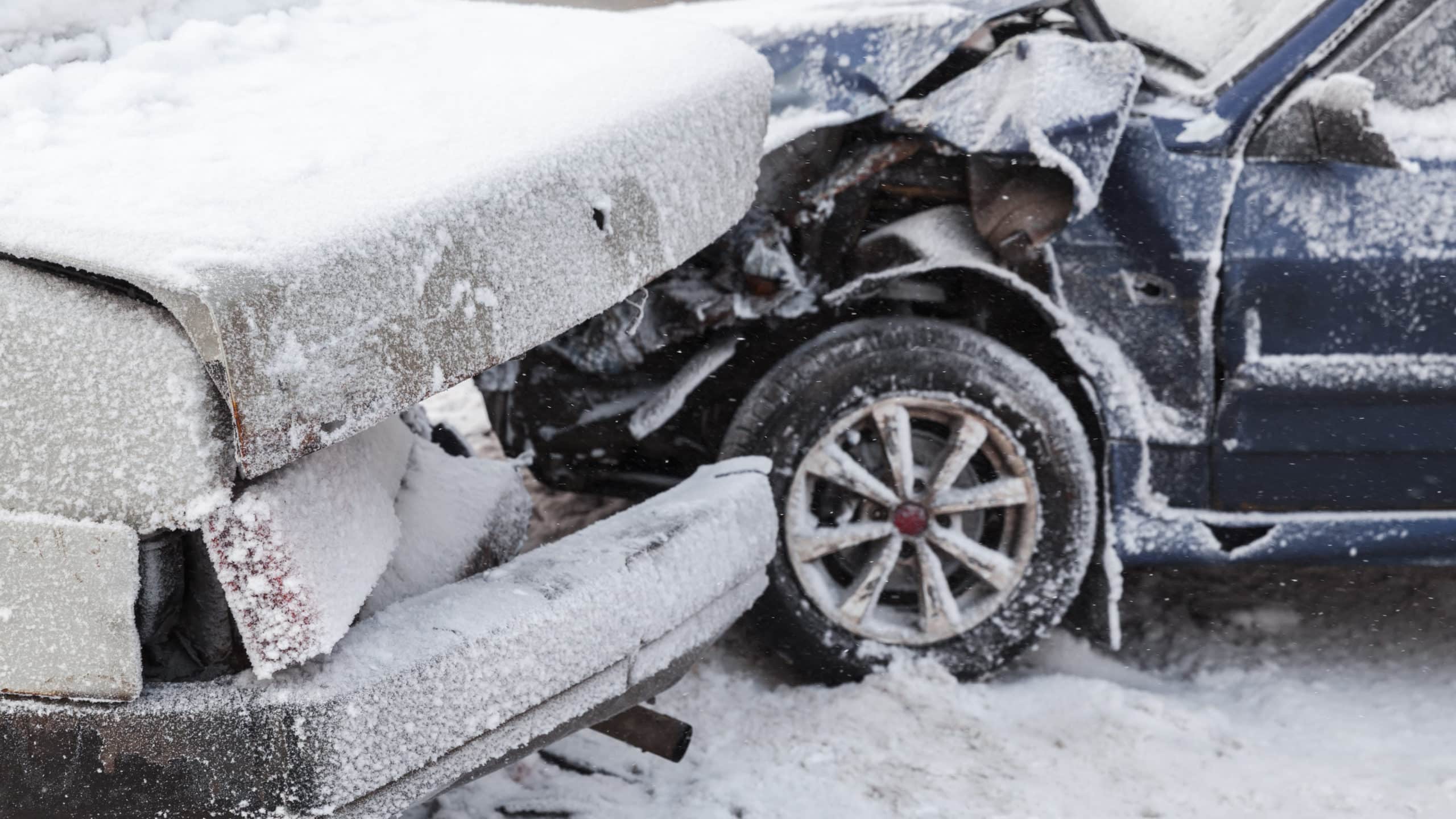With the holidays in full swing, many Californians find themselves traveling around the country in the hopes of delivering cheer and surprise to their family members. Traveling long distances in the winter, however, often involves driving through poor conditions, extremely cold weather, and slippery roads.
This year, over 100 million people will travel for the holidays. If you’re one of them, staying safe behind the wheel should be a priority. Today, we’re giving you the rundown on how cold weather affects your car, and what you can do to increase your awareness and safety behind the wheel.
How the Cold Weather Impacts Your Car
Attempting to drive in snow or through heavy rain can be nerve-wracking. With less traction gluing you to the road and lower visibility to process your surroundings, both navigating and driving become more dangerous. Even a “light rain” can increase your chance of getting into a fatal crash by up to 27%.
Making sure your car performs well on the roads is key for driving safely in the winter, especially if you’re traveling long distances or through storms. Unfortunately, cold weather can wreak havoc on vehicles. You want to look out for:
- Deflated tires. Cold weather causes tires to lose pressure. Check your tires at least once a week during the winter and reinflate them as needed. Driving on deflated tires can wear them down faster, giving you less traction on slippery roads.
- Thick oil. Oil can thicken during cold weather, making your car run less efficiently and even potentially damaging the engine. Switching to low-viscosity oil in the winter can help keep you running smoothly.
- Sluggish LCD screens. Many newer cars use LCD screens for various features. The molecules in the liquid crystal display circulate more slowly in the cold, and the last thing you need is an unresponsive screen while behind the wheel. Wait a little longer for your car to warm up before starting your drive.
- Cracked windshield wiper blades and frozen washer fluid. If you drive into a storm, windshield wipers that can’t deal with heavy snow or rain can be an annoyance at best and a hazard at worst. Consider purchasing winter wiper blades and using washer fluid that’s rated for cold weather.
- Less efficient travel. Electric vehicles are more popular than ever, and many don’t handle cold weather that well. For example, a Chevy Bolt EV is roughly 19% less efficient in cold weather than under ideal conditions. If you drive an electric vehicle in the winter, plan to recharge more frequently than you’re used to.
Keeping your car in good condition sets you up for success if you need to travel on icy roads or through storms.

Tips on How to Drive Safely in Winter Storms, Cold Weather, and on Ice
Preparing for your drive properly and taking the right measures behind the wheel can help you stay safe in inclement weather. California may have the luxury of ideal weather conditions virtually all year round, but if you’re traveling out of state, you’ll want to make sure you’re doing the following to mitigate the dangers of winter driving:
Make Sure Your Tires Are Well-Treaded
We wrote a little about how cold weather can deflate tires earlier, causing tread to wear down faster. Rain, snow, and ice can all make roads slippery. All it takes is 1/10th of an inch of water to significantly increase your chance of hydroplaning.
No list of winter driving tips is complete without a reminder to check your tires. If your tires have worn-out treads, you can easily lose control on icy, snowy, or rainy roads, even at speeds as low as 35 miles per hour. Around 70% of weather-related crashes in the U.S. happen on wet pavement. Make sure your tires have good tread, are properly inflated, and rotate them every 5,000 miles or so if you want to decrease wear and tear.
How Many Inches of Snow Is Unsafe to Drive In?
According to a regional twitter account from the National Weather Service, most accidents tend to occur in under 2″ of snow. While thick snow can affect your steering and cause you to become stuck, a thin layer of snow is especially dangerous, as it become compacted and incredibly slippery.
If you do start to hydroplane or lose control of your car on icy or snowy roads, don’t panic. Slamming on your breaks or trying to correct for your loss of control with oversteering will only make the problem worse. Let your vehicle slow down on its own, and try to hold the wheel steady. Once you regain control, try and find a safe place to pull off the road if you need to regain your composure to ensure you avoid other sliding vehicles.
Check That Your Lights Are in Good Condition
Maintaining good visibility – and ensuring other drivers can see you – is key to winter safety, but especially when driving through rain or snowstorms. Make sure your headlights are clean and dry – if you need to clean them off, don’t do so with liquid that will freeze. Use your turn signal earlier than you usually would to help drivers around you understand your intentions.
Your hazard lights can also be a useful tool to help you stay visible, especially when driving in a storm. You may also want to consider attaching some reflective cloth to a highly visible part of your vehicle – such as the antenna – to increase how visible your car is.
Drive Slowly, & Mind Icy Hills
Drive 5-10 mph slower than you normally would, especially if you’re driving on ice. Taking care to accelerate and decelerate slowly will help you maintain control of your car, even if you have to stop on a slippery surface.
Since braking slowly can help you control your vehicle, you’ll also want to leave a decent amount of space between your car and whoever’s in front of you. You also want to avoid cruise control – being able to change speed manually will help you maintain control.
Navigating hills in rain or snow can feel like something of a Sophie’s choice. As a rule of thumb, you want to start picking up speed before reaching a hill and let inertia carry you up the slope. Powering your way up a hill can make your tires spin out, causing you to lose control. You should also try to avoid stopping on hills whenever possible. Slowing your car down on an incline can be difficult, as can getting started up a hill from a standstill.

Tips for Driving in Low-Visibility Winter Conditions
In addition to making roads slippery, and snowstorms can significantly reduce your visibility.
If you know you’re going to drive through a storm on your way to a destination, look at the route on a map ahead of time. Try and keep in mind any large intersections or hills you’ll come across, so you know they’re coming and can navigate them safely.
Be aware and on the lookout for bad drivers on ice and poor conditions. You should also leave early, giving yourself more time to reach your destination.
All the winter driving tips we wrote about earlier – making yourself visible, taking it slow, keeping a safe distance between your car and other vehicles – apply twofold when driving in low visibility. You can also try and drive in already-existing tire tracks to increase the traction you get.
Last but certainly not least, pack some winter clothes and food with you if you believe you’ll drive into a storm, and make sure your gas tank is full before you leave. Pulling over at a safe spot and waiting for a storm to pass can be significantly safer than pressing on in dangerous conditions, and having some good snacks to help pass the time never hurts.
Whether you’re going home for the holidays or hosting loved ones yourself, we’re wishing you happy holidays and a wonderful New Year!
If you or someone you know does, unfortunately, get in an accident, we’re here for you. Contact us online or give us a call at (800) 501-3011 for a free consultation with our team.











